A little bit of history One of the most frequent questions we get asked here at the Inkdom’s secret bunker is what can be sensibly procured for careless beginners with small-ish hands. We don’t want to put them off with a lousy writing experience, but then again we’d rather it didn’t cost a fortune when the pen is sat on, melted over a Bunsen burner or lost on the school bus. Venerable British firm Manuscript, which has been supplying study desks since the days when that ink-well hole was in every-day use, turns out to be still in the business of providing a solution. Of course we had to give it a try!
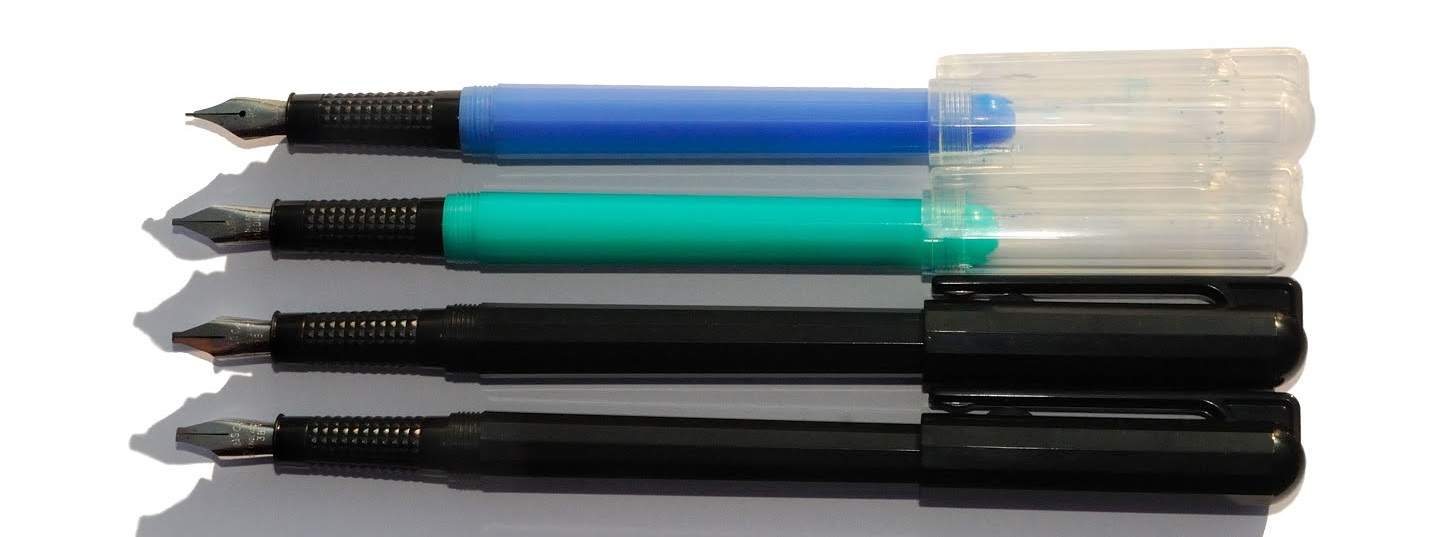
How it looks The Dodec has a slim barrel with, as the name suggests, twelve sides. The plastics in use range over sky blue turquoise, magenta, black and transparent finishes. With knurled grip sections the overall look is economical and functional, which is pretty much the Dodec proposition in a nutshell. There’s no mistaking it for a boring old ballpoint, though.
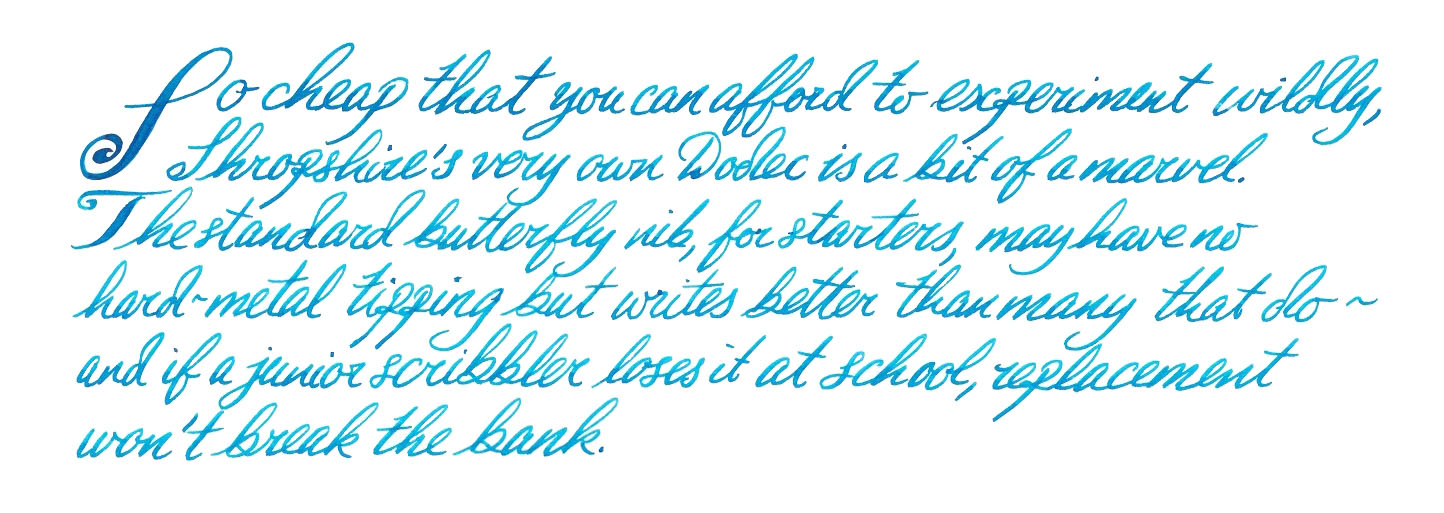
How it feels Light and easy to handle – as long as you don’t grip that non-slip section too tightly. The nibs feel positively laser-guided on the page, though; there’s no tactile clue as to how astonishingly inexpensive the Dodec is.

How it fills This is a straightforward cartridge filler, for most purposes. The dimensions are built to a budget and the barrel is actually too tight a fit for a standard Schmidt converter. However, the long ‘international’ cartridges sold by Waterman and Pelikan fit perfectly and allow for a useful squeeze when the nib has run dry – which can happen occasionally.
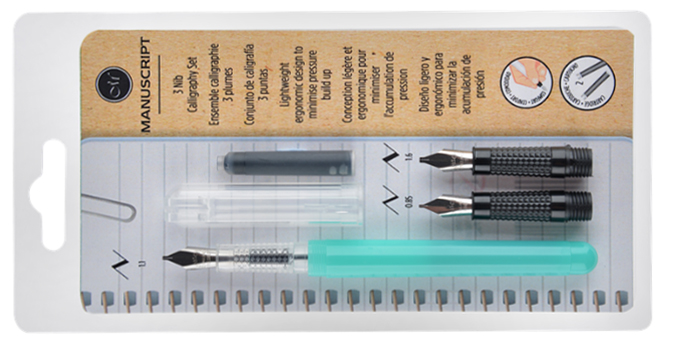
Crucially, how it writes… Now here is where it gets more complicated than might have been expected from the tiny price tag. For Dodecs sport two completely different types of nib! The ‘handwriting’ nib is essentially a folded or butterfly design, which writes amazingly smoothly without employing a harder metal on the tip. It’s a great introduction to what a proper fountain pen feels like, and in the unlikely event of wearing it out a replacement is very, very affordable. The italics, meanwhile, are of the classic ‘crisp’ variety and come in a dizzying range of sizes which encourages experimentation – they’re fun to use but can also produce seriously impressive results too.

Pen! What is it good for? The handwriting pen is obviously great for beginners but often impresses even grizzled gold nib fanatics, so it serves as everything from first fountain to everyday shopping-list-compiler. The italic nibs are made for having fun with, but even proper calligraphers approve. The Dodec is built down to a budget and this occasionally shows up as inconsistent ink flow, but reseating the friction-fit nib and feed when required is a very simple job. In return, you can afford to abuse them a bit and innovate. 
VFM Shop around and you can often pick these up about £1.50 a go. You’d be hard-pressed to find a decent ballpoint at that sort of price – if such a thing even existed, of course. That’s hard to argue with, really.
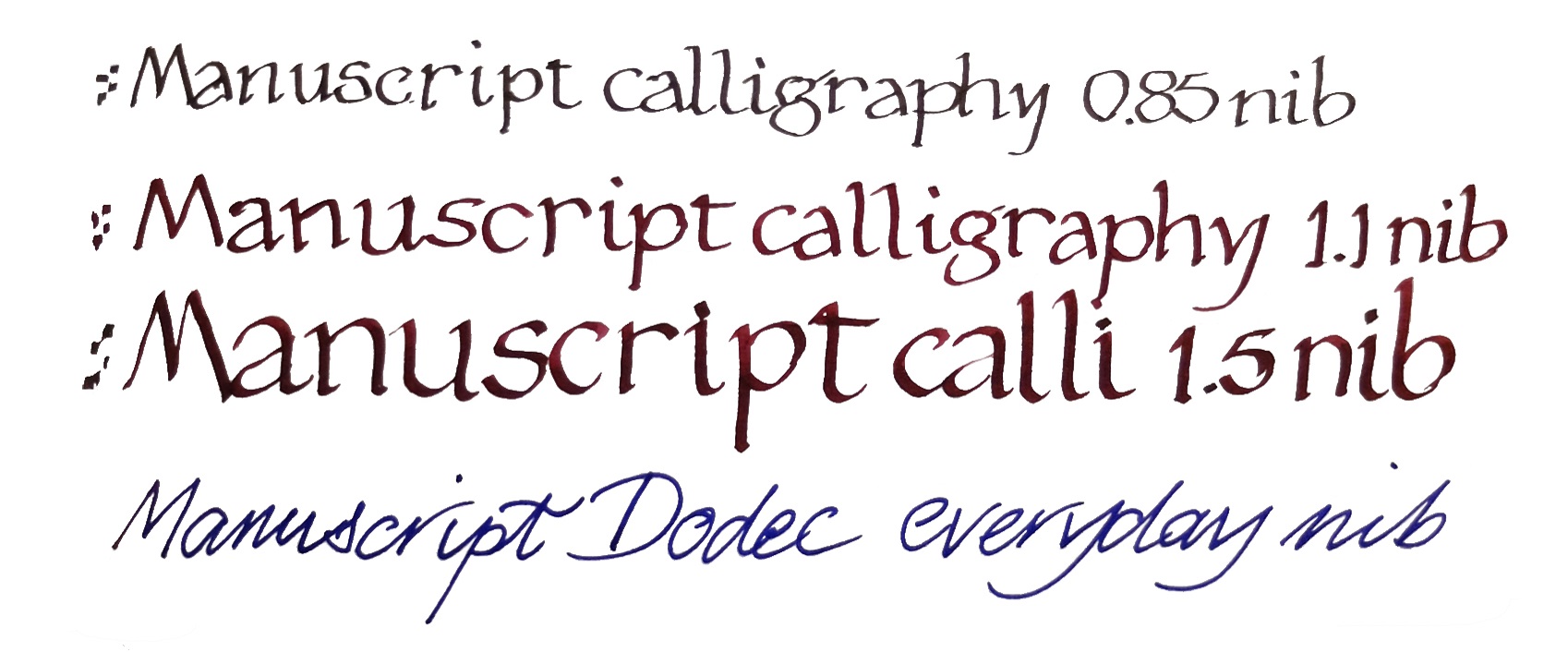
The only way is ethics Made right here in Blighty and using fairly minimal packaging, there’s not much to worry over and a fair bit to feel good about.

If this isn’t quite your cup of tea, but almost… The rest of the Manuscript range is probably worth a look instead. Some people do prefer the rounder, less nobbly ‘Classic’ from the same stable, which is similarly stonking value.
Our overall recommendation A Dodec costs less than a something a barista could make for you once upon a time, and you’ve had a year off from that so, seriously, what are you waiting for?

Where to get hold of one The handwriting and italic versions of the Dodec can often be found in ‘thrift’ outlets like Boyes and The Range, as well as from educational stationers in bulk. If that doesn’t appeal, plenty of online retailers and art supply shops stock a full range and you can even buy them from Manuscript direct. Try an online search for ‘Manuscript Dodec’ and you may be pleasantly surprised.

This meta-review references:
- Scribble’s, err, scribbles
- Nick’s calligraphic odyssey
- Jo’s spring budget special
- Joe’s nostalgic noodlings
- Ania’s budget breakdown
- Mick’s exhaustive investigation
Thanks to Manuscript for kindly furnishing us with samples to show what the Dodec can do.



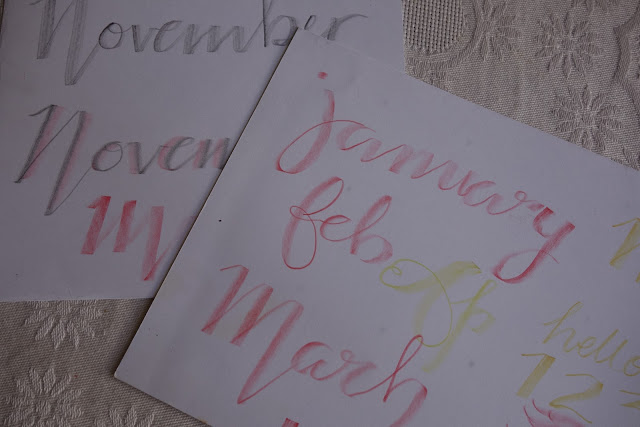


 However, not every aspect of the aesthetic was loved by everyone. The clip has two circles, echoing the dual crown of the cap’s top (which is a reminder that Manuscript has been going so long that they used to supply the kings of both Spain and Portugal), but the shape of the clip itself seemed a little gimmicky. As Laura put it, “don’t dress a model in Primark clothes.”
However, not every aspect of the aesthetic was loved by everyone. The clip has two circles, echoing the dual crown of the cap’s top (which is a reminder that Manuscript has been going so long that they used to supply the kings of both Spain and Portugal), but the shape of the clip itself seemed a little gimmicky. As Laura put it, “don’t dress a model in Primark clothes.”



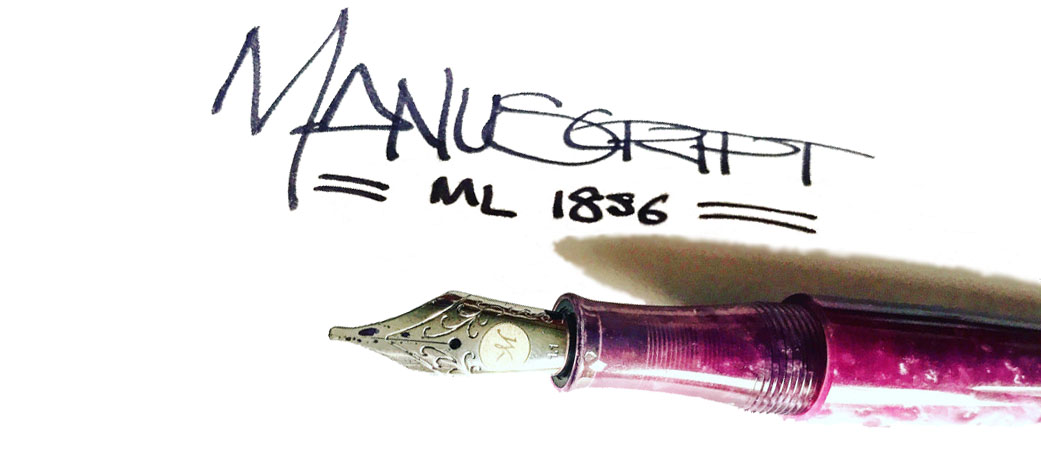 Most of our reviewers found the steel nibs satisfactory, albeit a little bit dry at first in one case. Overall, the writing experience was rated as pleasant by the reviewing team. The only thing that the italic nibs aren’t great for are reverse writing, as Daniel discovered. The #6 JoWo nibs write a fairly wet line and the feeds keep up well.
Most of our reviewers found the steel nibs satisfactory, albeit a little bit dry at first in one case. Overall, the writing experience was rated as pleasant by the reviewing team. The only thing that the italic nibs aren’t great for are reverse writing, as Daniel discovered. The #6 JoWo nibs write a fairly wet line and the feeds keep up well.  Pen! What is it good for? Manuscript seems to be, as a brand, synonymous with calligraphy, certainly for beginners here in the UK anyway. The 1.1mm and 1.5mm italic nibs means that you can get a little stylistic with your writing, particularly when considering scripts such as gothic.
Pen! What is it good for? Manuscript seems to be, as a brand, synonymous with calligraphy, certainly for beginners here in the UK anyway. The 1.1mm and 1.5mm italic nibs means that you can get a little stylistic with your writing, particularly when considering scripts such as gothic.


 Our overall recommendation While we loved using the pen, the price point just didn’t justify it until that was reviewed; there were too many alternatives which were similar to the ML1856 but better quality/feel for the same price or others that might sacrifice ever so slightly on the feel but were much more affordable. We like the direction Manuscript is heading in, but our recommendation was to wait until the value issue had been rectified before pulling the trigger.
Our overall recommendation While we loved using the pen, the price point just didn’t justify it until that was reviewed; there were too many alternatives which were similar to the ML1856 but better quality/feel for the same price or others that might sacrifice ever so slightly on the feel but were much more affordable. We like the direction Manuscript is heading in, but our recommendation was to wait until the value issue had been rectified before pulling the trigger.

